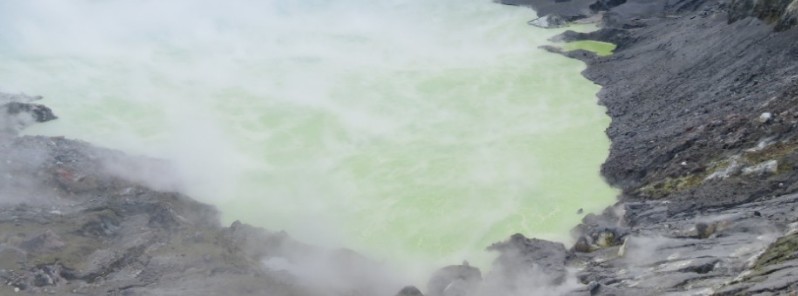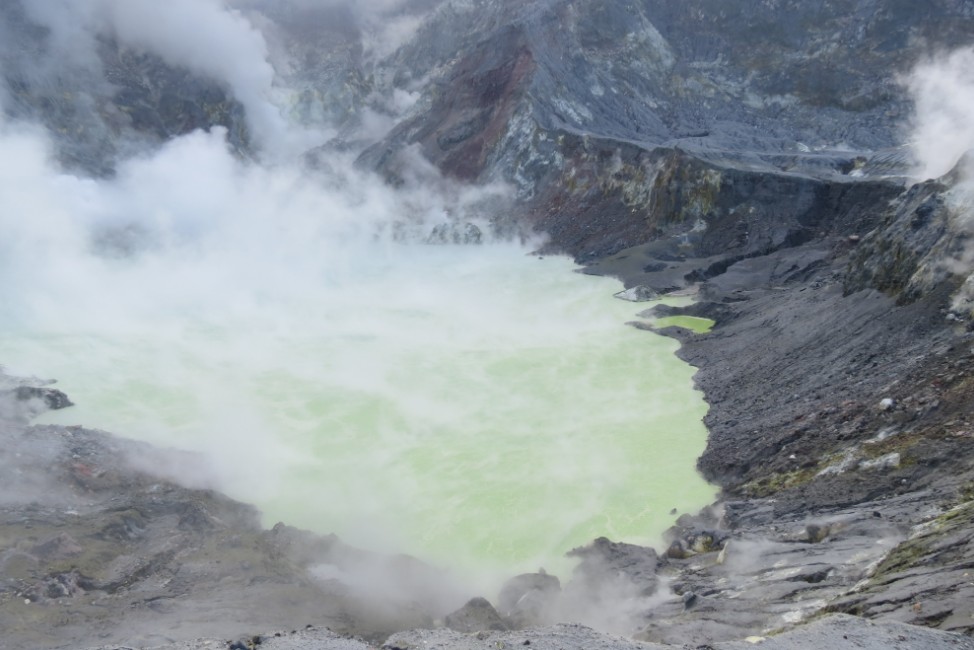White Island lake disappears, strong fumarole emissions, New Zealand

GNS volcanologists visited White Island late last week and confirmed that a large part of the gas is now being emitted from one ‘joint’ vent on the lava outcrop at the back of the crater. The joining of the vents has resulted in a stronger and noisier gas flow from this vent.
The temperature has declined slightly, it is now only 250 °C (482 °F), down from 300 °C (572 °F).
The other significant change is the disappearance of the shallow lake. The lake was about 3 m (984 feet) deep and has now drained to leave some small ponds. The water level started to drop on September 24 and by 26th the lake was gone and remains so. The seismic and acoustic activity remains low, and although the gas flux is difficult to measure (due to wind conditions) it doesn’t appear to have changed substantially.
"Recently we have also experienced some issues with the power supplies for some of our remote monitoring gear, mostly related to the accumulative effect of the weather (little sun) and ash on the solar panels. One of the cameras had an issue with the data card. On Friday a team visited the island armed with a new camera, batteries, glass cleaning gear, thermal IR, and gas measuring equipment," duty volcanologist Agnes Mazot said.

White Island crater lake on September 6, 2016. Credit: GNS
The easterly conditions prevailing when the team got there restricted their access to the summit area.
This meant the West Rim camera couldn’t be replaced and they were also unable to make detailed gas measurements as planned. They could visit the other two cameras, clean them, and swap out the batteries.
They also visited the larger fumarole, known as F0 and measured its temperature. This had increased about 9 °C (48.2 °F) and is now 190 °C (374 °F).
Ash emission has ceased, however, White Island is always capable of a new eruption at any time, without any useful warning.
The Volcanic Alert Level remains at Level 1. The Aviation Colour Code remains Yellow.
Source: GNS/GeoNet
Featured image credit: GNS

Commenting rules and guidelines
We value the thoughts and opinions of our readers and welcome healthy discussions on our website. In order to maintain a respectful and positive community, we ask that all commenters follow these rules.